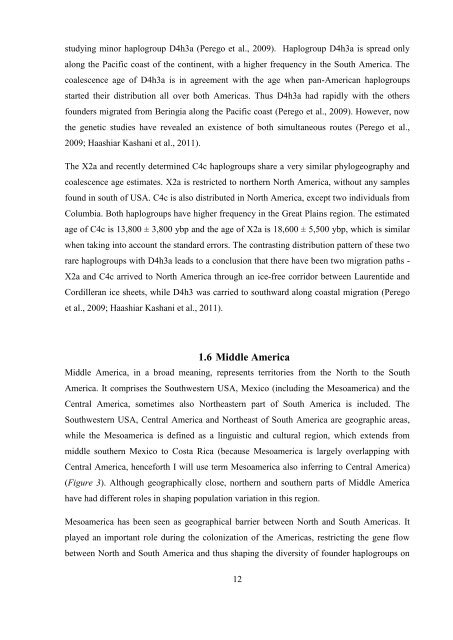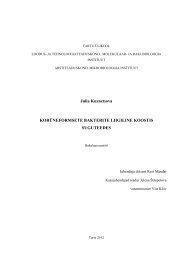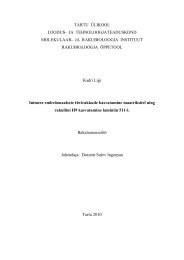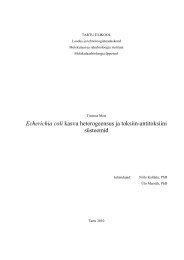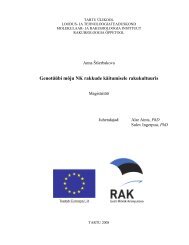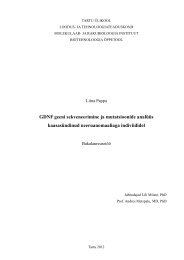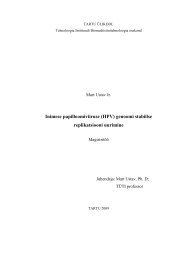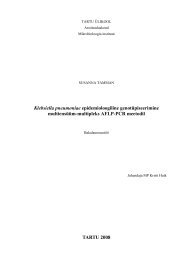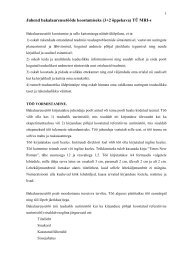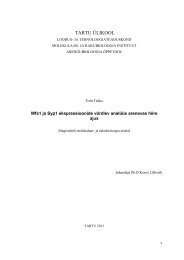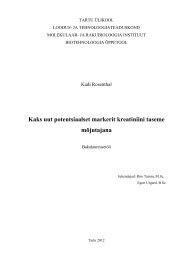Maternal variation in Huichol and Mixtec populations from Mexico
Maternal variation in Huichol and Mixtec populations from Mexico
Maternal variation in Huichol and Mixtec populations from Mexico
Create successful ePaper yourself
Turn your PDF publications into a flip-book with our unique Google optimized e-Paper software.
study<strong>in</strong>g m<strong>in</strong>or haplogroup D4h3a (Perego et al., 2009). Haplogroup D4h3a is spread only<br />
along the Pacific coast of the cont<strong>in</strong>ent, with a higher frequency <strong>in</strong> the South America. The<br />
coalescence age of D4h3a is <strong>in</strong> agreement with the age when pan-American haplogroups<br />
started their distribution all over both Americas. Thus D4h3a had rapidly with the others<br />
founders migrated <strong>from</strong> Ber<strong>in</strong>gia along the Pacific coast (Perego et al., 2009). However, now<br />
the genetic studies have revealed an existence of both simultaneous routes (Perego et al.,<br />
2009; Haashiar Kashani et al., 2011).<br />
The X2a <strong>and</strong> recently determ<strong>in</strong>ed C4c haplogroups share a very similar phylogeography <strong>and</strong><br />
coalescence age estimates. X2a is restricted to northern North America, without any samples<br />
found <strong>in</strong> south of USA. C4c is also distributed <strong>in</strong> North America, except two <strong>in</strong>dividuals <strong>from</strong><br />
Columbia. Both haplogroups have higher frequency <strong>in</strong> the Great Pla<strong>in</strong>s region. The estimated<br />
age of C4c is 13,800 ± 3,800 ybp <strong>and</strong> the age of X2a is 18,600 ± 5,500 ybp, which is similar<br />
when tak<strong>in</strong>g <strong>in</strong>to account the st<strong>and</strong>ard errors. The contrast<strong>in</strong>g distribution pattern of these two<br />
rare haplogroups with D4h3a leads to a conclusion that there have been two migration paths -<br />
X2a <strong>and</strong> C4c arrived to North America through an ice-free corridor between Laurentide <strong>and</strong><br />
Cordilleran ice sheets, while D4h3 was carried to southward along coastal migration (Perego<br />
et al., 2009; Haashiar Kashani et al., 2011).<br />
1.6 Middle America<br />
Middle America, <strong>in</strong> a broad mean<strong>in</strong>g, represents territories <strong>from</strong> the North to the South<br />
America. It comprises the Southwestern USA, <strong>Mexico</strong> (<strong>in</strong>clud<strong>in</strong>g the Mesoamerica) <strong>and</strong> the<br />
Central America, sometimes also Northeastern part of South America is <strong>in</strong>cluded. The<br />
Southwestern USA, Central America <strong>and</strong> Northeast of South America are geographic areas,<br />
while the Mesoamerica is def<strong>in</strong>ed as a l<strong>in</strong>guistic <strong>and</strong> cultural region, which extends <strong>from</strong><br />
middle southern <strong>Mexico</strong> to Costa Rica (because Mesoamerica is largely overlapp<strong>in</strong>g with<br />
Central America, henceforth I will use term Mesoamerica also <strong>in</strong>ferr<strong>in</strong>g to Central America)<br />
(Figure 3). Although geographically close, northern <strong>and</strong> southern parts of Middle America<br />
have had different roles <strong>in</strong> shap<strong>in</strong>g population <strong>variation</strong> <strong>in</strong> this region.<br />
Mesoamerica has been seen as geographical barrier between North <strong>and</strong> South Americas. It<br />
played an important role dur<strong>in</strong>g the colonization of the Americas, restrict<strong>in</strong>g the gene flow<br />
between North <strong>and</strong> South America <strong>and</strong> thus shap<strong>in</strong>g the diversity of founder haplogroups on<br />
12


